The ‘Holy Grail of shipwrecks’, which houses up to 200 tons of gold, silver and emeralds valued at $20 billion, will be recovered from the depths of the sea with the help of an underwater robot.
The Spanish galleon San José sank off the Colombian port of Cartagena in 1708, when its magazines detonated during a skirmish with the British. On board her were treasures worth billions of dollars, along with 600 sailors.
Nearly a decade after the Colombian government announced the discovery of the legendary shipwreck, authorities announced Friday that an expedition will embark on the recovery of these hidden treasures in April.
Culture Minister Juan David Correa told AFP that an underwater robot, scheduled to operate between April and May, will extract elements from the exterior of the galleon.
The first step is to see ‘how they materialize when they come out (of the water) and understand what we can do’ to continue the mission, Correa said.
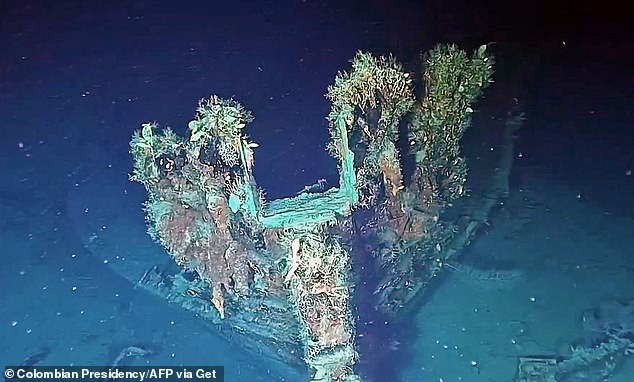
The ‘Holy Grail of shipwrecks’, which houses up to 200 tons of gold, silver and emeralds valued at $20 billion, will be recovered from the depths of the sea with the help of an underwater robot.
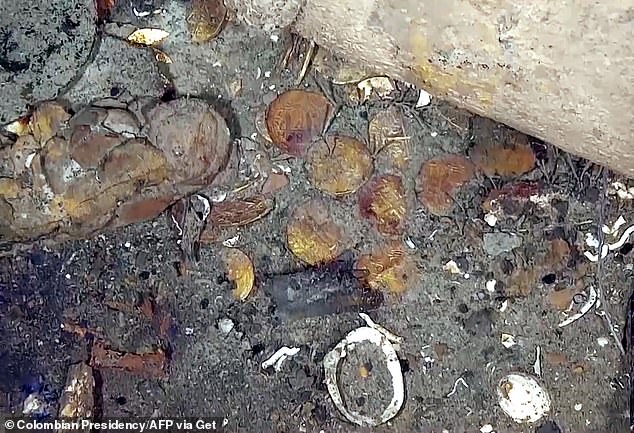

The Spanish galleon San José sank off the Colombian port of Cartagena in 1708, when its magazines detonated during a skirmish with the British. On board her were treasures worth billions of dollars, along with 600 sailors.
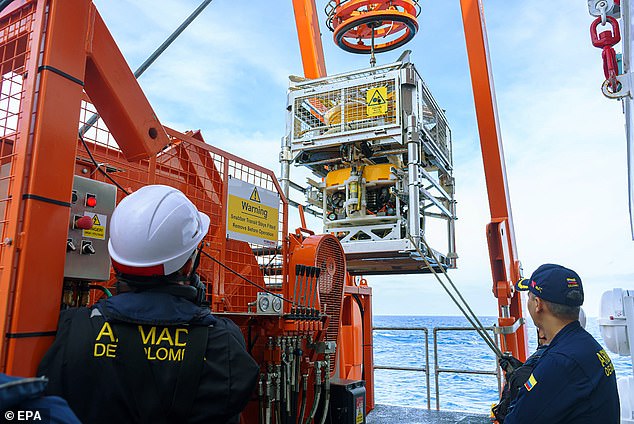

Almost a decade after the Colombian government revealed the discovery, authorities announced Friday that an expedition will embark on the recovery of these hidden treasures. In the photo: crews searching for the wreck.
Authorities have kept the location of the mission secret, but the scientific ship tasked with exploring the treasure was seen anchored at the dock of the ACR Bolívar naval base in Cartagena, Colombia, on Friday.
The operation is expected to cost more than $4.5 million, but the value of the items recovered from the shipwreck could be “incalculable,” according to Correa.
In 2015, the Colombian government announced that a team of navy divers had discovered the legendary ship submerged in nearly 3,100 feet of water.
And in 2022, another team brought back stunning images of its perfectly preserved cargo.
But the discovery of the galleon has since sparked a huge row over who owns the wreck, with an American company claiming to have found the ship and demanding half of the loot. The Spanish government and an indigenous group also claim.
The American research company Glocca Morra claims to have found the San José in 1981 and handed over the coordinates to the Colombians on the condition of receiving half the fortune once the ship was recovered.
But this was answered in 2015 by the then president of Colombia, Juan Manuel Santos, who said that the Navy had found the ship in a different location on the seabed.
Glocca Morra, now called Sea Search Armada, is suing for half of the treasure (about $10 billion according to estimates) under the US-Colombia Trade Promotion Agreement, according to Bloomberg.
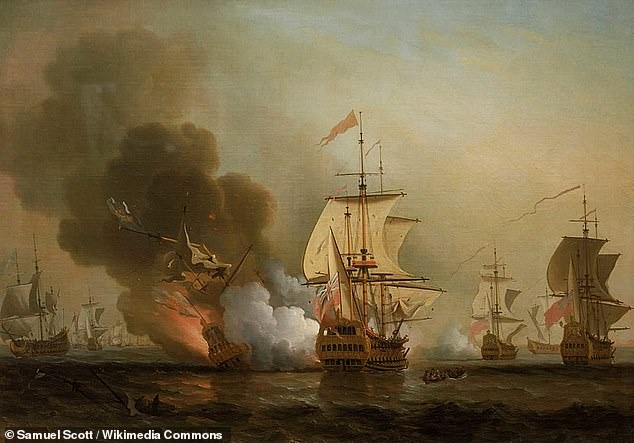

Spain and Great Britain were fighting the War of the Spanish Succession at the time and the Royal Navy was approaching dominance on the high seas when it sent the San José to the bottom.
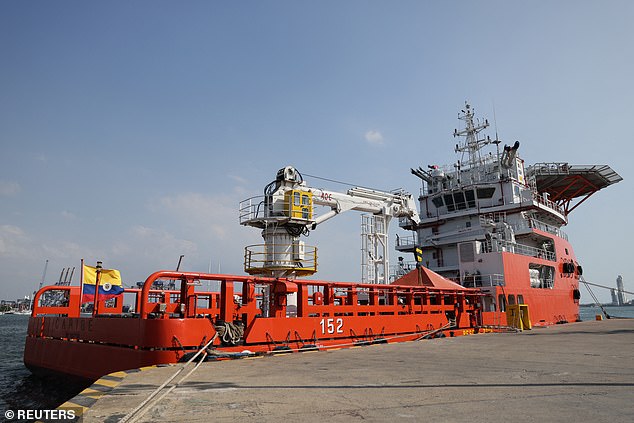

Authorities have kept the location of the mission secret, but the scientific ship tasked with exploring the treasure was seen anchored at the dock of the ACR Bolívar naval base in Cartagena, Colombia, on Friday.
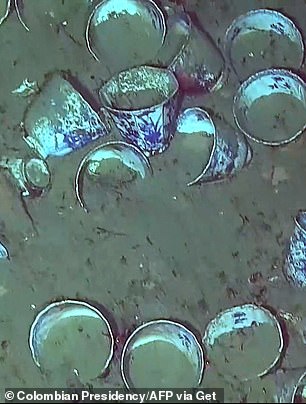

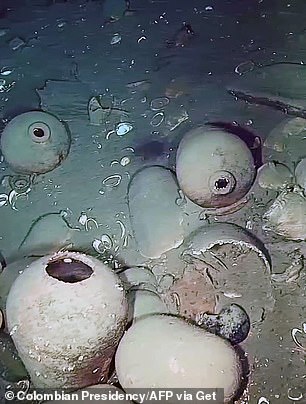

The discovery of the galleon has since sparked a huge fight over who owns the wreck, with an American company claiming to have found the ship and demanding half of the loot. The Spanish government and an indigenous group also claim
But Correa said the government team had visited coordinates provided by Sea Search Armada and found no trace of the San José.
To further complicate matters, there are competing claims between the Spanish, whose Navy the ship belonged, and the indigenous Qhara Qhara nation of Bolivia, who say their people were forced to extract the gold and jewels, so the treasures belong to them.
‘Not only for the symbolic issue but rather for the spiritual issue. We just want our ancestors to be at peace,” native leader Samuel Flores told AFP.
Meanwhile, Colombia has hailed the find as a huge historical and cultural achievement.
Correa told Bloomberg last year: ‘This is one of the priorities of the Petro administration. The president has told us to quicken our pace.’
The idea is ‘to stop considering that we are facing a treasure for which we have to fight as if we were in colonial times, with the pirates who disputed these territories,’ said Correa, the Minister of Culture.
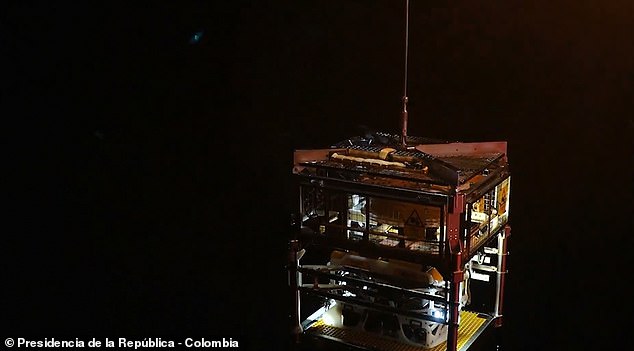

The robot will work at a depth of 600 meters to remove elements ‘without modifying or damaging the wreck’
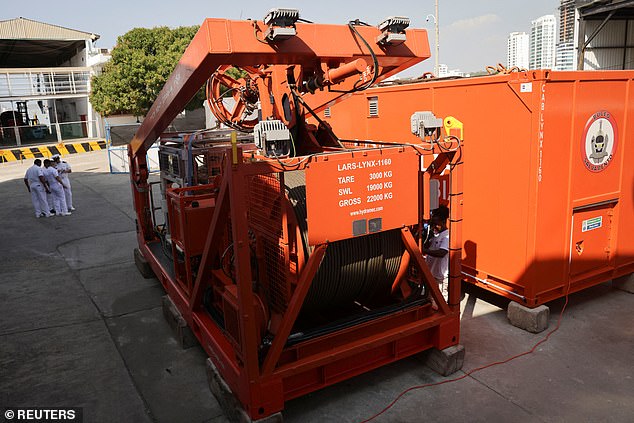

The operation is expected to cost more than $4.5 million, but the value of the items recovered from the shipwreck could be ‘incalculable,’ according to Correa
The 62-gun galleon was sailing from Portobelo in Panama at the head of a fleet of 14 merchant ships and three Spanish warships when it encountered the British squadron near Barú.
Spain and Great Britain were fighting the War of the Spanish Succession at the time and the Royal Navy was approaching dominance on the high seas when it sent the San José to the bottom.
Images recovered in 2022 clearly show a portion of the bow covered in algae and shellfish, as well as the remains of the hull structure.
The images offer the best view yet of the treasure found aboard the San José, including gold bars and coins, clay cannons made in Seville in 1655 and intact china.
You can also see porcelain tableware, pottery and glass bottles.

